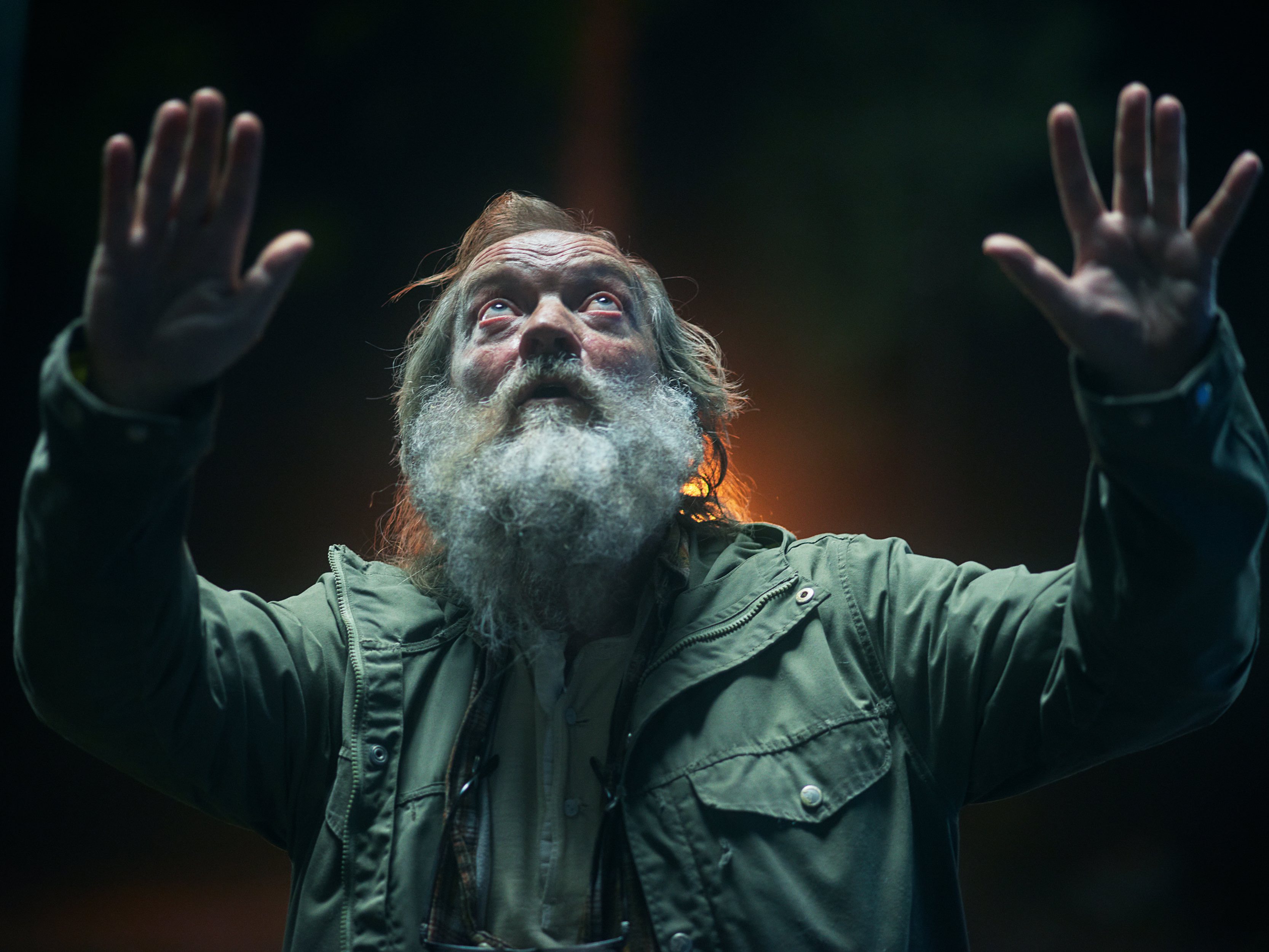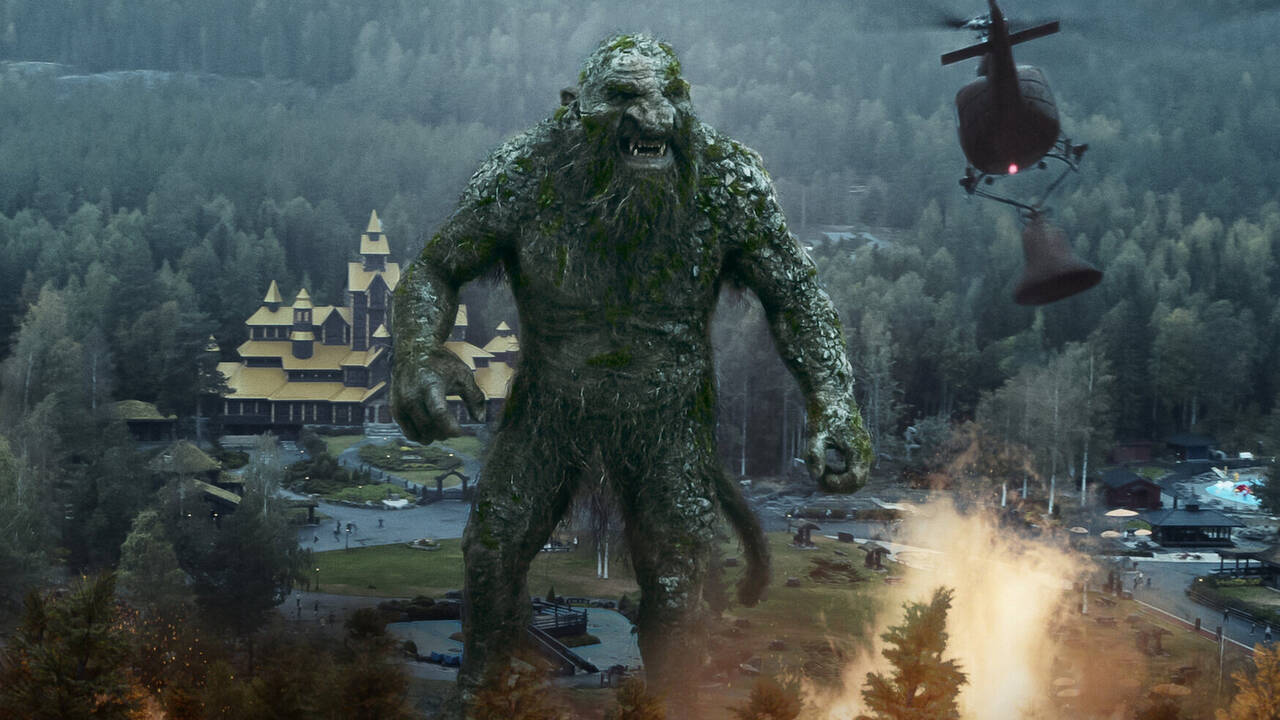If you’re sick of seeing Hollywood do one sort of movie a hundred times over, but you generally like that sort of movie, then watching a version of it in the hands of a foreign filmmaker might be just the remedy. Chances are they’ll do something quirky and unexpected with the material, and if there are computer effects required, those effects should look pretty good nowadays, given that high quality CGI is no longer the sole province of Tinseltown.
Except, a problem arises when the director handed this sort of movie has also made a pitstop in Hollywood – not a very successful pitstop at that — and taken its most exhausted tropes back home with him. That’s what ultimately sinks Troll, a (primarily) Norwegian language monster movie that’s just debuted on Netflix. Roar Uthaug’s 2015 film The Wave, a really fun disaster movie in which a tidal wave crashes through the fjords, was enough to get him poached for the inferior 2019 reboot of Tomb Raider. He’s returned to his native land with a movie that’s in between those two in quality, but a lot more Tomb Raider than Wave, unfortunately – and bursting at the seams with tired cliches. You can set your watch by them.
That’s a terrible shame, because a troll the size of a city building – who has been disguising himself as a mountain during several centuries of hibernation – awakening and causing havoc in Lillehammer and Oslo is a great idea. It should have the parts of Hollywood you like (the sort of CGI least successfully replicated by practical effects), without the parts of Hollywood that make you groan (stock character types that might have been concocted by an AI screenwriting program). Troll doesn’t get the mileage it should from the former, and has way too much of the latter.
Nora Tidemann (Ine Marie Wilmann) is busy digging up dinosaur bones when something a lot more lively requires her expertise. Despite the picketing of protestors, the government has blown a hole in the side of a mountain to build a tunnel, only the mountain isn’t all mountain. Some of it is troll, and when this troll sends rocky debris everywhere following his rude awakening, the squashed protestors are just a preview of what this thing can do if let loose.
A room full of politicians initially thinks that blowing it to smithereens is the best approach, as rooms full of politicians frequently do, but the military’s fusillade of artillery has little effect on the stone-faced creature. So they have to get a bit creative, reluctantly calling in the daughter of a man whose ideas are so marginal that he’s basically been a pantsless recluse for several decades. Tobias Tidemann (Gard B. Eidsvold) used to tell young Nora of the myths that trolls once wandered these lands, and he seems to have been onto something – though it’s incredible how long people can continue to write you off as a lunatic even after witnessing the destruction with their very own eyes.
Because she’s the protagonist and all, Nora hopes to do more troll whispering and less troll demolishing, but it’s unclear if she’ll be able to get close enough to the troll’s ear without getting caught in the carnage. She brings a bumbling political flunky (Kim Falck) and a sympathetic soldier (Mads Sjogard Pettersen) along with her and her dad, with whom she still must reconcile, to form the motley crew that may try to take this thing down – in the most humane way possible, she hopes.
Since we’ve already gone on about Troll’s enslavement to formula, it might be best to start with a puzzling failure to adhere to our expectations. After its cold open in Nora’s youth, the movie begins with a scene conducted entirely in English – the scene of Nora on her palaeontological dig. Her team leader is played by none other than Billy Campbell, who landed on the map 30 years ago playing the title character in The Rocketeer, and has been working consistently since. (He’s credited as “Ollie Campbell,” but that’s not important right now, to quote Leslie Nielsen’s Dr. Rumack.) While his appearance provokes a pleasantly surprised chuckle, it has no function to the larger story, as the character disappears after this one scene (and not because he gets killed off), and there isn’t a single other scene in English. It’s as much of a head scratcher in its own right as Uthaug’s every predictable decision that follows is a head scratcher for entirely different reasons.
Any time the film promises something inspired, it snatches it back from us. At the risk of spoiling one of the Troll’s best bits, the collective brain trust decides to listen to one of Nora’s outside-the-box approaches by attacking the troll with church bells – since the ringing of church bells is part of the legend of what trolls despise. So they lash these giant bells to the bottom of helicopters to circle the rampaging beast, who indeed covers his ears in agony. Unfortunately, this scene devolves immediately (and predictably, which undermines the value of the strategy) into a far better sequence in a far better movie, that being Kong: Skull Island from 2017.
To talk about spoilers at all in a film like Troll, though, is to miss how exactly it hits every narrative beat from every monster or disaster movie you’ve seen in the last 20 years, ever since the mentality shifted to the progressive ideal of trying to save the monster rather than destroy it. You can’t spoil something that comes pre-spoilt. It’s too bad Roar Uthaug seems to have been spoilt by Hollywood because The Wave redux would have been just fine by us. Even his allusions to really great films of the past — like when the tea in a cup dances on each gargantuan troll footstep — remind us of just how much better those earlier films were.
Troll is currently streaming on Netflix.


